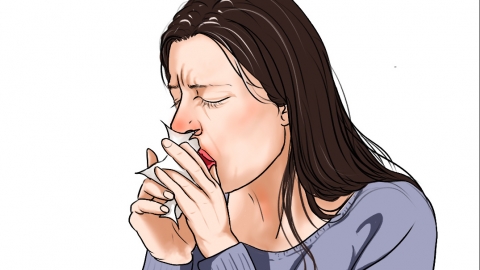What are the symptoms of bronchitis?
Under normal circumstances, the main symptoms of bronchitis include coughing, expectoration, chest tightness, wheezing, and fever. If discomfort symptoms occur, it is recommended to seek timely medical consultation and treatment at a regular hospital. Detailed analysis is as follows:
1. Coughing
Infection by pathogens or external irritants can cause inflammation of the bronchial mucosa. The inflammation stimulates nerve endings in the bronchial mucosa, leading to coughing. Initially, the cough is often dry, but as the condition progresses, it gradually worsens and may become paroxysmal. The cough tends to be more frequent at night or upon waking in the morning. Some patients may experience chest pain when coughing severely.

2. Expectoration
Inflammation affects the bronchial mucosa and causes abnormal secretion from the glands, resulting in mucus production. Initially, the sputum is often thin and white. If bacterial infection is present, the sputum may turn yellow or green and become purulent and viscous. Some patients may feel that the sputum adheres to the throat or trachea and is difficult to expel.
3. Chest Tightness
Inflammation causes congestion and edema of the bronchial mucosa, narrowing the airway and affecting airflow, which leads to chest tightness. Patients often feel tightness in the chest and difficulty breathing. Symptoms tend to be more noticeable after physical activity and may slightly improve with rest. In severe cases, patients may feel short of breath even at rest.
4. Wheezing
Bronchial spasm or mucosal swelling narrows the airway, causing abnormal airflow sounds and wheezing. Patients may hear a "wheezing" sound in the throat or chest while breathing. Wheezing often worsens after coughing or physical activity. Some patients may experience increased respiratory rate and need to exert effort to breathe in order to relieve discomfort.
5. Fever
Infection by pathogens triggers a systemic inflammatory response. Inflammatory factors act on the body's temperature-regulating center, causing fever. Patients usually experience low-grade or moderate fever, although a few with severe illness may develop high fever. Fever may be accompanied by symptoms such as headache, fatigue, and generalized body aches. Body temperature may temporarily decrease after taking antipyretics but tends to rise again easily.
In daily life, it is important to maintain good indoor air circulation, avoid exposure to irritants such as smoke, dust, and cold air, and reduce stimulation of the bronchial mucosa. Drinking plenty of warm water helps keep the respiratory tract moist, dilutes sputum, and facilitates its expulsion.








